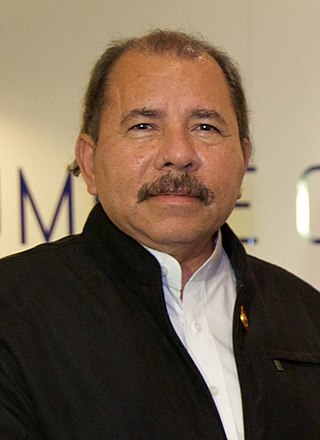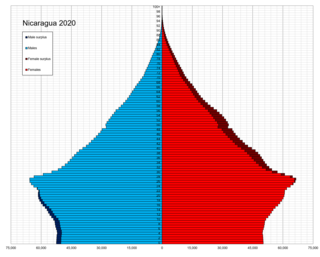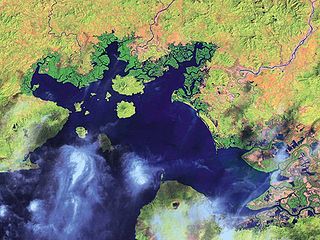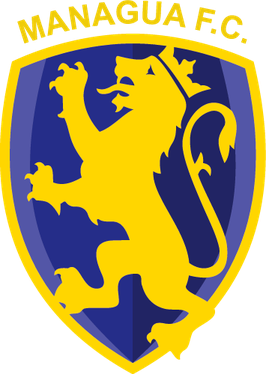Judo at the 2017 Central American Games was held at the Managua, Nicaragua from 6 to 8 December 2017.
Judo at the 2017 Central American Games was held at the Managua, Nicaragua from 6 to 8 December 2017.
| Event | Gold | Silver | Bronze |
|---|---|---|---|
| 55 kg | Luis Montes | César Atz | Yuvini Sigüenza |
| 60 kg | Julio Molina | Sebastián Sancho | Jefryd García |
| Bernabé Vergara | |||
| 66 kg | Ignacio Sancho | Ronal González | Boris Najarro |
| Jonathan Rogel | |||
| 73 kg | Gustavo López | Daniel Reyes | Joshua Ortega |
| Kevin Monroy | |||
| 81 kg | Juan Diego Turcios | Edgar Chub | Otoniel Martínez |
| 90 kg | Carlos Figueroa | José Luiz Ortega | David Guillén |
| Omar Avalos | |||
| 100 kg | Jahi Cuningham | Moisés Frederick | James Denham |
| +100 kg | Armando Pineda | Amílcar Quinteros | Quibian Waisome |
| Event | Gold | Silver | Bronze |
|---|---|---|---|
| 44 kg | Evelyn Solis | Jeniffer Sarria | Nelis Santamaría |
| 48 kg | Keyling Ruiz | Némesis Candelo | Lesly Hernández |
| 52 kg | Vicky Fonseca | Kristine Jiménez | Viviana Ruiz |
| Stefany García | |||
| 57 kg | Sayra Laguna | Anna Tirado | Gelga Chic |
| 63 kg | Miryam Roper | Yennifer Domínguez | Cergia David |
| 70 kg | Saraí Mendoza | Dunia Santos | Jennifer Ortíz |
| 78 kg | Keyla Navas | Marian Talavera | not awarded |
| +78 kg | Kenia Rodríguez | Marcela Canales | not awarded |
* Host nation (Nicaragua)
| Rank | Nation | Gold | Silver | Bronze | Total |
|---|---|---|---|---|---|
| 1 | 5 | 3 | 6 | 14 | |
| 2 | 4 | 4 | 2 | 10 | |
| 3 | 4 | 1 | 4 | 9 | |
| 4 | 2 | 1 | 1 | 4 | |
| 5 | 1 | 5 | 5 | 11 | |
| 6 | 0 | 2 | 1 | 3 | |
| 7 | 0 | 0 | 0 | 0 | |
| Totals (7 entries) | 16 | 16 | 19 | 51 | |

Central America is a subregion of the Americas. Its boundaries are defined as bordering Mexico to the north, Colombia to the south, the Caribbean Sea to the east, and the Pacific Ocean to the west. Central America usually consists of seven countries: Belize, Costa Rica, El Salvador, Guatemala, Honduras, Nicaragua, and Panama. Within Central America is the Mesoamerican biodiversity hotspot, which extends from northern Guatemala to central Panama. Due to the presence of several active geologic faults and the Central America Volcanic Arc, there is a high amount of seismic activity in the region, such as volcanic eruptions and earthquakes which has resulted in death, injury, and property damage.

The Contras were the various U.S.-backed and funded right-wing rebel groups that were active from 1979 to 1990 in opposition to the Marxist Sandinista Junta of National Reconstruction Government in Nicaragua, which came to power in 1979 following the Nicaraguan Revolution. Among the separate contra groups, the Nicaraguan Democratic Force (FDN) emerged as the largest by far. In 1987, virtually all Contra organizations were united, at least nominally, into the Nicaraguan Resistance.

José Daniel Ortega Saavedra is a Nicaraguan politician serving as President of Nicaragua since 2007. Previously he was leader of Nicaragua from 1979 to 1990, first as coordinator (1979–1985) of the Junta of National Reconstruction, and then as President of Nicaragua (1985–1990). During his first term, he implemented policies to achieve leftist reforms across Nicaragua. In later years, Ortega's left-wing radical politics cooled significantly, leading him to pursue pro-business policies and even rapprochement with the Catholic Church. As a part of this, his government adopted strong anti-abortion policies, and his rhetoric took on a new, strongly religious tenor, despite formerly having professed atheism.

Nicaragua, officially the Republic of Nicaragua, is the largest country in Central America, bordered by Honduras to the north, the Caribbean to the east, Costa Rica to the south, and the Pacific Ocean to the west. Managua is the country's capital and largest city. As of 2015, it was estimated to be the third largest city in Central America. Nicaragua's multiethnic population of six million includes people of mestizo, Indigenous, European and African heritage. The main language is Spanish. Indigenous tribes on the Mosquito Coast speak their own languages and English.

According to the 2022 revision of the World Population Prospects, Nicaragua has a population of 6,850,540. Whites and Mestizos and tribally unaffiliated Native Americans combined make up about 86% of the population. The remainder of the Nicaraguan population is 9% English-speaking Afro-Nicaraguans, and 5% Tribal Native American.

The Miskitos are a native people in Central America. Their territory extends from Cape Camarón, Honduras, to Río Grande de Matagalpa, Nicaragua, along the Mosquito Coast, in the Western Caribbean Zone. Their population is estimated at 700,000 people as of 2021, according to the official Miskito Database.

The Gulf of Fonseca, a part of the Pacific Ocean, is a gulf in Central America, bordering El Salvador, Honduras, and Nicaragua.

The Nicaragua national football team represents Nicaragua in men's international football and is controlled by the Nicaraguan Football Federation. Nicaragua achieved their first qualification into a major international competition in 2009, as they qualified for the 2009 Gold Cup as the last entrant from Central America, after a 2–0 victory against Guatemala in the fifth place match in the 2009 Nations Cup. However, the team has never qualified for the FIFA World Cup.

Cable News Network en Español is a Pan-American Spanish-language news channel, owned by CNN Global, a news division for Warner Bros. Discovery. It was launched on pay television, on March 17, 1997.

Gallo pinto or gallopinto is a traditional dish from Central America. Consisting of rice and beans as a base, gallo pinto has a long history and is important to Nicaraguan and Costa Rican identities and cultures, just as rice and beans variations are equally important in many Latin American cultures as well.

Managua Fútbol Club is a professional football club based in Managua, Nicaragua which currently plays in the Nicaraguan Premier Division.

The Nicaragua men's national basketball team is the national basketball team in Nicaragua. They have yet to appear in the FIBA World Cup or the FIBA AmeriCup.

Universidad Nacional Autónoma de Nicaragua – Managua is a Nicaraguan football team playing in the Primera División de Nicaragua of the Nicaragua football system. It is based in Managua.

Corruption remains a serious problem for doing business in Nicaragua.
This is a list of the Honduras national football team results from 2010 to 2019.

Hurricane Otto was a strong late-season tropical cyclone that impacted parts of Central America in November 2016. It was the first Atlantic hurricane since Cesar–Douglas in 1996 to survive the crossover from the Atlantic Ocean to the Pacific Ocean. Forming late on November 20 in the southwestern Caribbean Sea, Otto was the fifteenth and final named storm, seventh hurricane and fourth major hurricane of the 2016 Atlantic hurricane season. It quickly intensified into a strong tropical storm the next day, and on November 23–24, rapidly strengthened into a Category 3 hurricane, the first in the month of November since Hurricane Paloma in 2008, and the latest date an Atlantic hurricane attained such intensity on record. Otto made landfall in Nicaragua at peak intensity on November 24, thus becoming the latest hurricane to make landfall in the Atlantic basin since 1851 when records began. Traveling along the Nicaragua–Costa Rica border, the system rapidly weakened to a tropical storm before emerging over the eastern Pacific Ocean, becoming the final storm of the 2016 Pacific hurricane season as well. Hostile environmental conditions inhibited reorganization, and Otto subsequently degenerated into an elongated trough on November 26.

YouTube Kids is an American video app and website for children developed by YouTube, a subsidiary of Google. The app provides a version of the service oriented solely towards children, with curated selections of content, parental control features, and filtering of videos deemed inappropriate for viewing by children under the age of 13, in accordance with the Children's Online Privacy Protection Act, which prohibits the regular YouTube app from profiling children under the age of 13 for advertising purposes.

The 2018–2022 Nicaraguan protests began on 18 April 2018 when demonstrators in several cities of Nicaragua began protests against the social security reforms decreed by President Daniel Ortega that increased taxes and decreased benefits. After five days of unrest in which nearly thirty people were killed, Ortega announced the cancellation of the reforms; however, the opposition has grown through the 2014–2018 Nicaraguan protests to denounce Ortega and demand his resignation, becoming one of the largest protests in his government's history and the deadliest civil conflict since the end of the Nicaraguan Revolution. On 29 September 2018, political demonstrations were declared illegal by President Ortega.

The COVID-19 pandemic in Nicaragua was a part of the worldwide pandemic of coronavirus disease 2019 caused by severe acute respiratory syndrome coronavirus 2. The virus was shown to have spread to Nicaragua when the first case, a Nicaraguan citizen who had returned to the country from Panama, was confirmed on 18 March 2020.